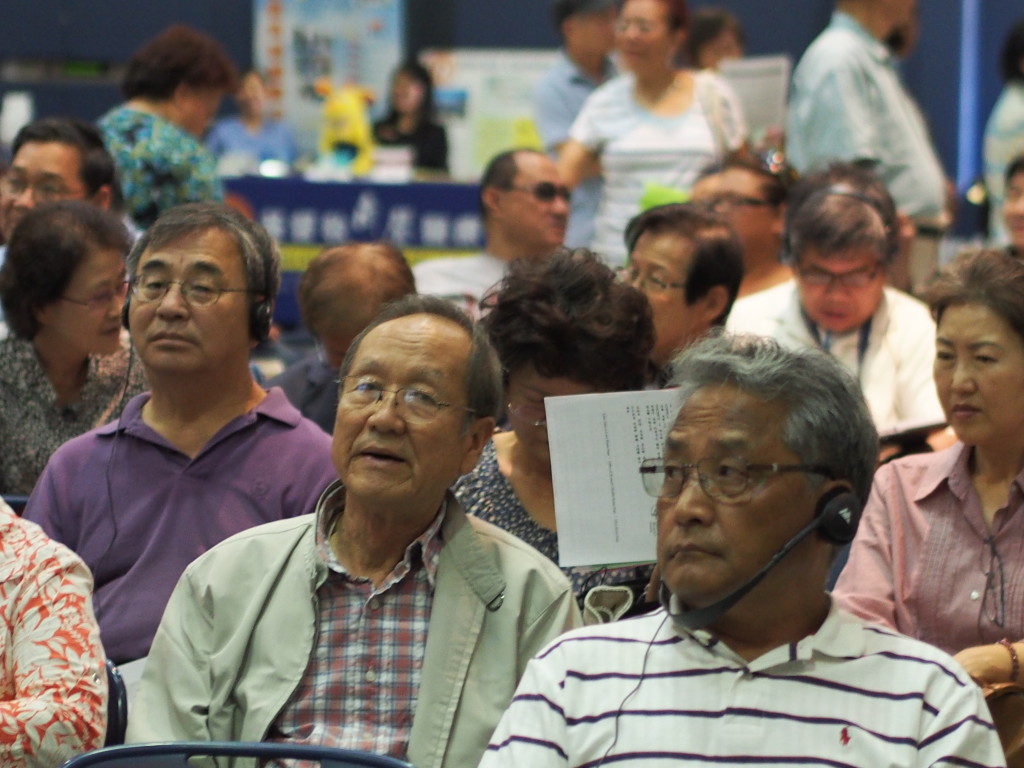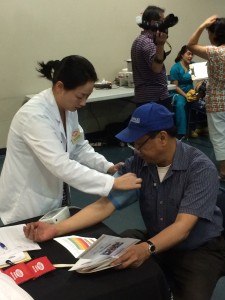Asian American and Pacific Islander (AAPI) older adults are often in vulnerable positions when it comes to taking care of their health. AAPI seniors face many barriers including: a lack of adequate health insurance, language barriers, cultural beliefs, changes in their diet after immigration, and a lack of resources and information. Many older AAPI adults have less access to health screening opportunities compared to the general population. In order to help address these issues, senior health fairs can be a good way for AAPI seniors to check their health status.
Recently, the National Asian Pacific Center on Aging (NAPCA) partnered with the American Heart Association (AHA) to host Senior Wellness Fairs in Seattle and Los Angeles. These fairs provided important educational presentations related to heart health by physicians and health professions, and provided free health screenings, including blood pressure, glucose, cholesterol, Body Mass Index, dental screening, stroke test, eye sight to seniors.
Through the health fairs, we learned how health education and screenings are important to the lives of many older AAPI adults. Since many AAPI seniors are limited in English, the presentations were supported by simultaneous translation services, and many community based organizations brought informational materials in Asian languages.
Together, more than 500 seniors received the benefits of these health fairs, and some of them shared their stories after the events.
Mr. C’s story: A health screening success story
Mr. C is taking medications every day to reduce his high blood pressure. On the day of the Senior Wellness Fair, he prepared to attend the event. During the event, he went to take a free blood pressure screening and found his blood pressure was dangerously high. His high blood pressure was reported to Dr. Hong, interventional Cardiologist at Northwest Hospital. Dr. Hong called 911 and sent him to emergency care immediately. After the event, Mr. C visited NAPCA’s office and shared that his doctor increased his medication dosage accordingly.
Ms. M’s story: The benefits of simultaneous interpretation
Ms. M immigrated from Korea with her daughter’s support a few years ago. Ms. M thought that English was always a problem because she wasn’t able to understand it well. Although NAPCA staff invited her to the health event, Ms. M did not expect to understand anything from the fair because the presentations would be in English. When she sat at her seat, the event staff asked what language she understood and gave her a headset. While presenters were talking, Ms. M was able to understand because of the simultaneous interpretation provided by a Korean speaking interpreter. One of the presentations was about herbal medicines. Ms. M relies heavily on herbal medicine because she feels that herbal medicines are natural and without harm. Based on what she learned from the presentation, Ms. M showed all of her herbal medicines to her pharmacist to avoid any conflicts with her cholesterol and diabetes medications.
According to a Centers for Disease Control and Prevention National Vital Statistics report, heart disease is one of the leading causes of death with a rate of 25.6% among older AAPI adults aged 65 and older. According to a National Heart, Lung, and Blood Institute report, AAPI show low levels of awareness and lower blood pressure screening rates compared to the total U.S. population. In addition, the report revealed that AAPIs are less engaged in physical activities compared to the general population. For instance, only 16.7 % of older Asian adults met the Federal Physical Activity Guidelines (AHA Statistical Fact Sheet in 2013).
It is not enough to emphasize the importance of heart health to older AAPI adults. Collaborating with social service organizations and offering AAPI seniors assistance with language and cultural barriers, is critical for effectively promoting health awareness for AAPI seniors.
Eun Jeong Lee is the SCSEP National Director for the National Asian Pacific Center on Aging (NAPCA). The opinions expressed in this article are those of the author and do not necessarily reflect those of the Diverse Elders Coalition.



